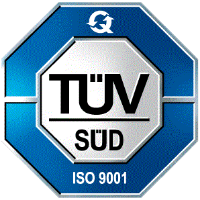Last week the European commission published the new Medical Device Regulation (MDR) and the question on how this will impact the Medical Device industry within Europe have been asked by many. The purpose of this new regulation is to ensure:
- a consistently high level of health and safety protection for EU citizens using these products
- the free and fair trade of the products throughout the EU
- that EU legislation is adapted to the significant technological and scientific progress occurring in this sector over the last 20 years.
Based on a serial of serious adverse events from medical devices there has been a need for the previous Medical Device Regulation to be strengthened. Tragically, patients have suffered or even died from complications related to medical devices that were never studied in clinical investigations before being implanted in patients. As devices have evolved and become more complex, the existing Medical Device Directives have gradually become inappropriate in assuring safety and effectiveness, according to the EU commission. In order for EU to consolidate its role as a global leader within the medical device industry, a revision of the legislation was necessary.
At a fundamental level, the MDR also follows the New Approach2, based upon the CE marking system with premarket conformity assessments carried out by Notified Bodies and post-market surveillance carried out by the Competent Authorities in each Member State. Although the framework is the same, many aspects have become more explicit and detailed, e.g. the contents of the technical documentation, the conformity assessment procedures, the restriction of equivalence to previous product generations otherwise leading to the need for fresh clinical investigations, the qualification of Notified Bodies, the notification procedures for clinical investigations, the referral procedure for products incorporating a medicinal product or biological tissue, the need for Post-Marketing Clinical Follow-Up studies for most devices. etc. The MDR also brings about new requirements, e.g. the review of the clinical evaluation by an expert group for high risk-devices, the filing of Periodic Safety Update Reports, the need for a person responsible for regulatory compliance, the joint liability of Authorized Representatives and manufacturers in case of defective devices causing harm and the mandatory use of Unique Device Identifiers and their traceability through economic operators including importers and distributers. Expectations on increased transparency are also very high with the introduction of an extended version of the EUDAMED database to support public access to the registered economic operators, the issued EC certificates, the clinical investigations, the (anonymized) adverse event reports and product recalls per product group.
Naturally, this more complex system will place additional strain on all economic operators and especially on manufacturers, who will have to demonstrate that old products meet the new requirements. As all Notified Bodies will have to undergo re-notification under the new rules and all product will have to be reassessed within the three years’ transition period, a large bottleneck is to be expected with long lead times and extended review times.
1). http://ec.europa.eu/growth/sectors/medical-devices/regulatory-framework/revision_da
2) http://ec.europa.eu/DocsRoom/documents/18027/attachments/1/translations/en/renditions/native
Especially if the Notified Bodies already today start implementing the new MDR, manufactures will need to start working on being compliant to the new MDR as of this publication. Small startup companies can suffer from this and new innovative products might get lost in the time consuming and expensive regulations.
Conclusion: The current premarketing procedures may not be comprehensive enough and may be particularly challenging for devices that have been approved on the basis of equivalence to an already marketed device. It is clear when reading the new MDR that more clinical investigations on medical devices will be required. In some cases, this can be a benefit to the device. However, it is possible that positive trade balance is at risk. If clinical investigations are required, the time for the device to reach the marked will increase and therefore the cost, paid by the end user will increase. The total cost for our health economy will also increase, and this will have impact on all of us. It is important that the Notified Bodies keep in mind, when a clinical investigation is required, that it is not possible, nor ethical correct, to do clinical relevant investigations on all products or components.
Systems for approving new medical devices must provide pathways to market for important innovations while also ensuring that patients are adequately protected. To achieve these goals, the European Union is striving for a combination of premarket testing and postmarked vigilance. The need for a strengthened MDR was necessary and it is going to be interesting to see how the requirements of the MDR will impact time for approval, the positive trade balance and the end product.



